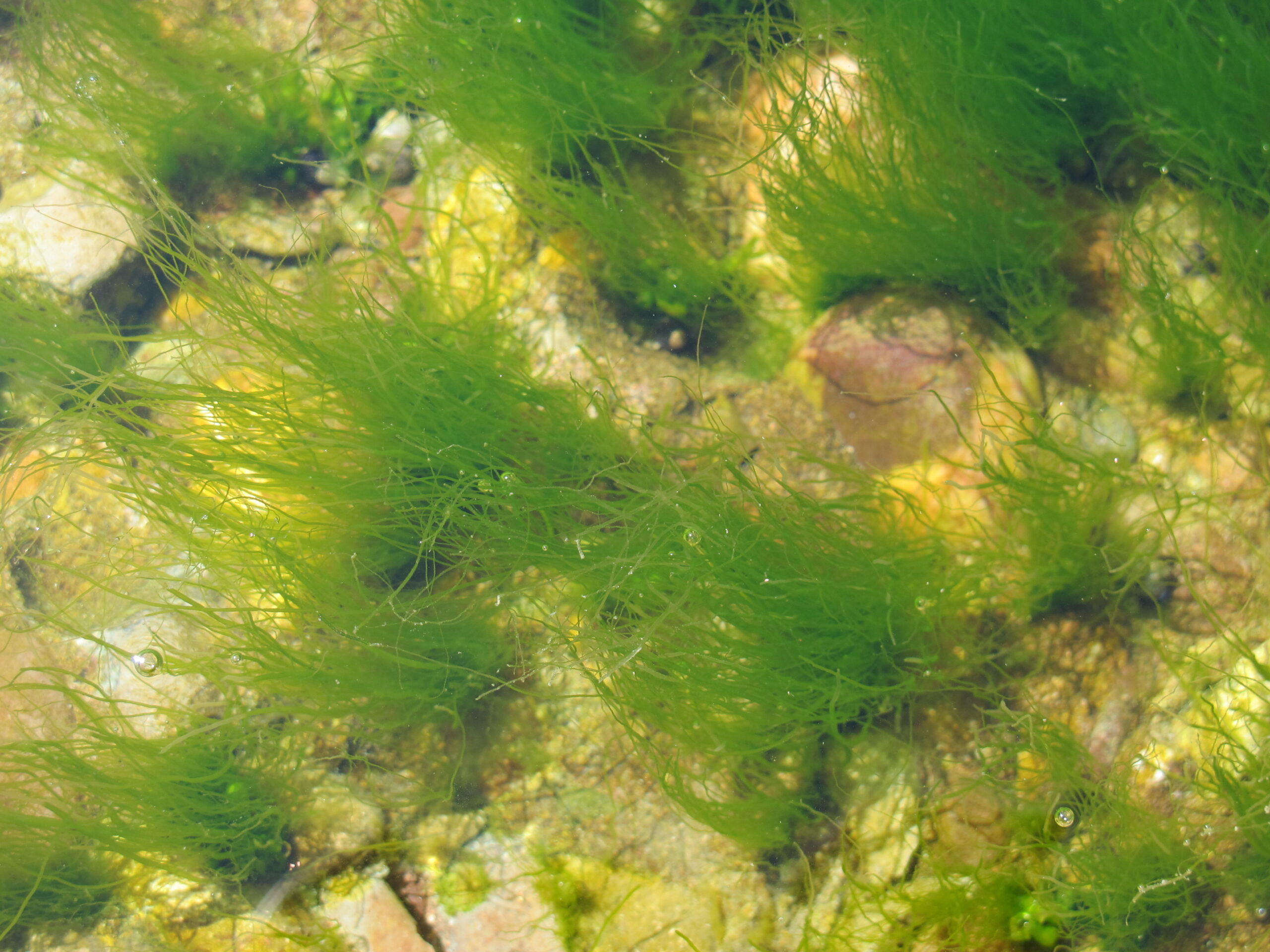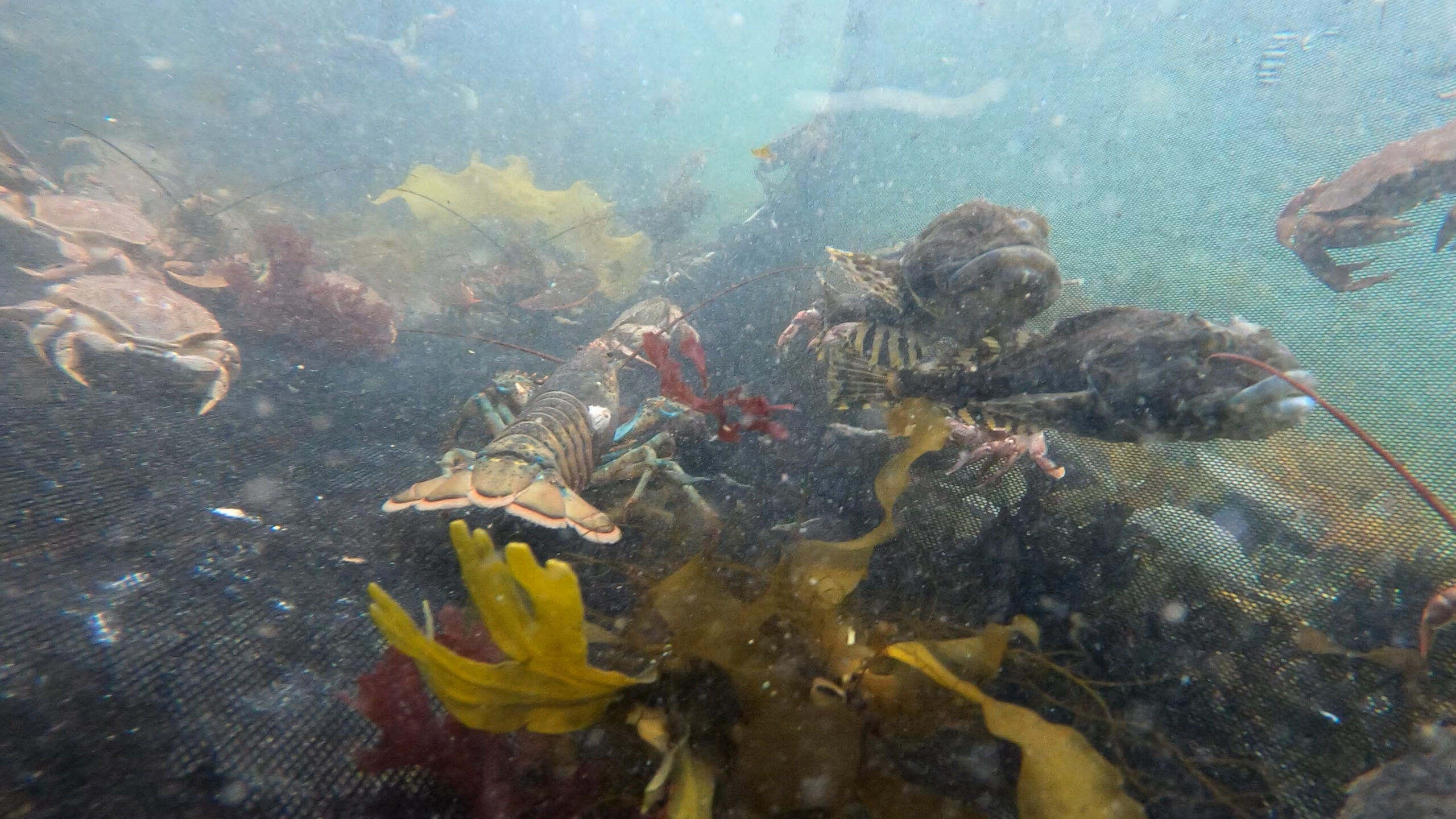
SIZE:
Between 10 and 30 cm.
LIFE EXPECTANCY:
Less than one year.
LIFE CYCLE:
Ulva reproduces by releasing male or female cells, which then fuse to form a new alga.
Once the reproductive cells have been released, certain parts of the alga turn white and die. There is no need to worry, though; the alga will later regenerate from spores.
This alga grows mainly in summer.

Gutweed thrives best in nitrogen-rich environments.
Credit : Eric Tamigneaux, photo taken in Pointe-Saint-Pierre.
Gutweed is a tube-shaped alga with no branching. These tubes are long, thin and filled with air. It has a small disk-shaped holdfast from which the tubes grow.
The colour is a somewhat translucent, bright green.
Coastal zone, up to 10 m deep.
Gutweed tolerates variable salinity and can be found in a wide variety of environments: ditches, rocky basins, estuaries, lagoons, marine water, etc. However, it favours calm environments.
A multitude of algae
There are 16 different types of gutweed in the St. Lawrence. Ulva intestinalis is the most widespread. It is found worldwide.
PREYS:
CO2
Solar energy
PREDATORS:
Herbivorous molluscs
Grazing fish
MACHINES:
Hand harvesting.
REGULATIONS:
Harvesting requires a permit. Use a sharp object to cut the algae above the holdfast, so as not to tear it off.
Gutweed is a Smarter seafood-listed species.
BENEFITS:
Gutweed is rich in protein, iron, calcium and vitamins B and A. It contains high levels of nitrogen and phosphorus, making it particularly effective as a natural fertilizer in agriculture.
LET’S COOK:
Tastes similar to spinach, with a hint of iodine.
OUR CULINARY ADVICE:
- Add raw to salads.
- Use its dried, flaked version to enhance the taste of dishes.
The waters of the St. Lawrence are known for their good quality. However, as algae absorb the elements present in the water to grow, it is preferable to ensure that the harvesting site is clean before eating this species fresh.






